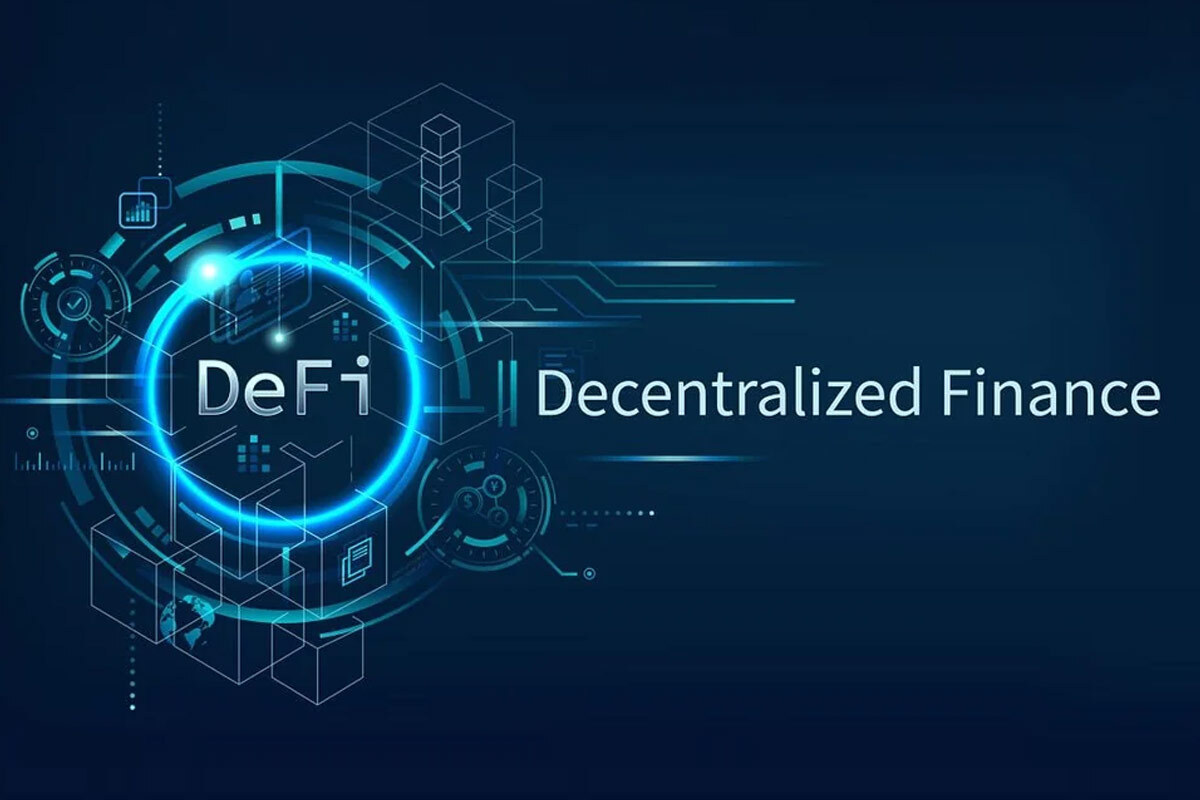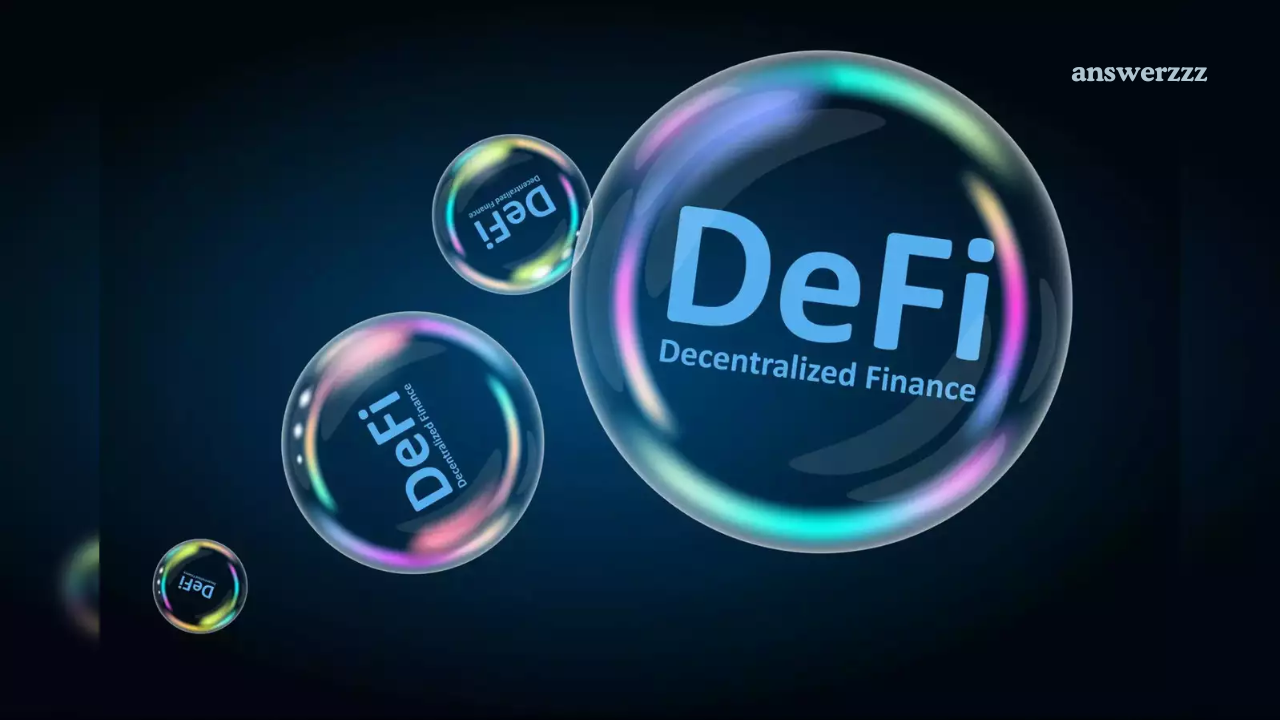Decentralized Finance (DeFi) has emerged as a transformative force in the financial industry, challenging the traditional banking and financial systems. Leveraging blockchain technology and cryptocurrencies, DeFi offers an alternative financial infrastructure that operates without intermediaries like banks, brokers, and insurers. The potential of DeFi is immense, promising greater accessibility, inclusivity, and efficiency. As we move into 2026, DeFi is expected to undergo significant growth and innovation. This article explores the current trends shaping the DeFi space and offers predictions for its evolution in 2026.
What is Decentralized Finance (DeFi)?
At its core, DeFi is a movement within the cryptocurrency and blockchain space that aims to recreate and improve traditional financial systems using decentralized technologies. Instead of relying on centralized entities like banks or insurance companies, DeFi leverages smart contracts on blockchains such as Ethereum to facilitate peer-to-peer transactions, borrowing, lending, insurance, trading, and more.
Smart contracts are self-executing contracts with the terms of the agreement directly written into code. This eliminates the need for intermediaries, reducing fees, and enhancing transparency. In a DeFi ecosystem, users interact with decentralized applications (dApps) or protocols, allowing them to access financial services without relying on a third party.
Current Trends in DeFi (2024)
Before diving into predictions for 2026, it’s important to understand the current trends that are shaping the DeFi landscape.
Cybersecurity 2026: New Threats and Solutions for a Safer Digital World
1. Growth of Layer 2 Solutions
The Ethereum blockchain, the backbone of most DeFi projects, has faced challenges with scalability and high transaction fees. To address these issues, Layer 2 solutions like Optimism, Arbitrum, and zk-Rollups have gained traction. These solutions provide faster and cheaper transactions by processing them off-chain before settling them on Ethereum.
In 2024, Layer 2 solutions are becoming essential to the scalability of DeFi platforms, allowing them to handle a higher volume of transactions while maintaining the security and decentralization of the Ethereum network.
2. DeFi and NFTs Convergence
Non-fungible tokens (NFTs) have grown beyond digital art and collectables. In DeFi, NFTs are being used as collateral for loans, enabling users to unlock liquidity without selling their valuable assets. Additionally, NFTs are being integrated into various financial products, such as decentralized insurance policies or gaming-based DeFi ecosystems.
This convergence of DeFi and NFTs is opening new opportunities for users to leverage their assets in innovative ways. In 2024, this trend is expected to expand, particularly as NFTs evolve beyond the realm of art into more functional roles within the financial system.
3. Security and Regulation
Security continues to be a major concern for DeFi platforms, with several high-profile hacks and exploits occurring in recent years. However, the DeFi space is maturing, with projects focusing on improving security protocols, conducting audits, and increasing transparency.
Moreover, regulators are starting to take a closer look at DeFi, with governments exploring ways to integrate decentralized technologies into existing financial regulations. In 2024, we are seeing the first steps toward regulation in certain jurisdictions, and this trend is expected to continue in the coming years.
4. DeFi for Sustainability
Sustainability has become an increasingly important concern for the DeFi ecosystem. Many DeFi protocols are exploring how they can align with green energy initiatives and carbon offset programs. As environmental concerns continue to grow, there is a rising demand for DeFi solutions that prioritize sustainability and contribute positively to the environment.
Predictions for DeFi in 2026
As we look toward 2026, several key trends and developments are expected to shape the future of decentralized finance.

1. Mainstream Adoption of DeFi
By 2026, DeFi is poised to become more mainstream. While it is still in the early stages of adoption in 2024, the increasing use of blockchain technologies, cryptocurrencies, and decentralized applications suggests that more users will embrace DeFi as a viable alternative to traditional financial systems.
DeFi protocols are likely to evolve and become more user-friendly, making it easier for individuals who are not familiar with cryptocurrency or blockchain to participate. User interfaces will be simplified, and the barriers to entry will be lowered, allowing individuals from all walks of life to access DeFi services.
Moreover, financial institutions, including banks and insurance companies, will begin to adopt DeFi technologies. We are already seeing a growing interest from institutional players in blockchain and decentralized finance, and by 2026, many traditional financial services could integrate DeFi solutions to streamline their operations and reduce costs.
2. Interoperability Between Blockchains
One of the biggest challenges in DeFi today is the fragmentation of different blockchain ecosystems. Many DeFi platforms operate on Ethereum, while others are built on alternative blockchains like Solana, Binance Smart Chain, and Avalanche. This lack of interoperability limits the seamless movement of assets and liquidity between different platforms.
By 2026, interoperability is expected to be a key focus for the DeFi ecosystem. Cross-chain protocols like Polkadot, Cosmos, and Chainlink are already working on solutions to enable communication between different blockchains. These solutions will allow users to move assets freely between various DeFi platforms, unlocking greater liquidity and reducing the barriers to entry for users across different ecosystems.
3. DeFi Insurance and Risk Management
DeFi insurance is still a niche market, but it is growing rapidly. Traditional insurance systems are often slow, opaque, and expensive, making them ripe for disruption by DeFi. In the coming years, decentralized insurance protocols will offer a range of products, from smart contract coverage to crop insurance for farmers in developing countries.
By 2026, we can expect to see more sophisticated DeFi insurance models that are tailored to specific industries and needs. Smart contract-based insurance products will become more reliable and efficient, offering lower premiums, faster payouts, and more transparency compared to traditional insurers.
How AI-Driven Robotics Are Revolutionizing Manufacturing in 2026
In addition, decentralized risk management solutions will allow users to better protect their assets from volatility and other market risks. With the rise of synthetic assets and derivative trading, DeFi will offer more advanced risk management tools, making it easier for users to hedge against potential losses.
4. Privacy-Focused DeFi
Privacy remains a key concern in the DeFi space. While most DeFi platforms are built on public blockchains, which offer transparency, they also expose transaction details and user data. This can be a barrier to adoption for those who prioritize privacy.
By 2026, privacy-focused DeFi platforms will become more prevalent. Zero-knowledge proofs (ZKPs) and other privacy-enhancing technologies will enable private transactions, allowing users to participate in DeFi without revealing their financial information. ZKPs, for example, will allow users to prove they have enough funds for a transaction without disclosing the amount or the source of the funds.
As privacy concerns continue to grow, especially with the increasing integration of DeFi into the global economy, privacy-preserving features will be essential for maintaining user trust and attracting new users to the ecosystem.
5. DeFi and Central Bank Digital Currencies (CBDCs)
Central Bank Digital Currencies (CBDCs) have been gaining traction in recent years, with many countries exploring their potential. While CBDCs are centralized by nature, they could play a complementary role in the DeFi ecosystem.
In 2026, we can expect to see greater integration between DeFi platforms and CBDCs. For example, users may be able to use CBDCs as collateral for DeFi loans or participate in decentralized savings protocols using government-backed digital currencies. This could help bridge the gap between the traditional financial system and decentralized finance, making DeFi more accessible to a wider audience.
Moreover, the rise of CBDCs could prompt regulatory clarity for DeFi platforms, helping to ensure their legitimacy and security in the eyes of governments and institutions.
6. Artificial Intelligence and DeFi
Artificial intelligence (AI) will play a significant role in the future of DeFi. AI and machine learning algorithms are already being used in DeFi for tasks such as risk analysis, market predictions, and automated trading. In 2026, we can expect AI to be integrated into DeFi protocols in more sophisticated ways.
AI-powered DeFi platforms will provide users with personalized financial services, from automated wealth management to risk assessment and investment strategies. These platforms will be able to analyze vast amounts of data in real-time, making more accurate predictions and improving decision-making processes for users.
Moreover, AI could be used to enhance the security of DeFi protocols by detecting and preventing malicious activities such as hacks or exploits. As the DeFi space grows, AI will be crucial in ensuring the stability and safety of decentralized financial systems.
7. Global Financial Inclusion
One of the key promises of DeFi is the potential to provide financial services to the unbanked and underbanked populations around the world. By 2026, DeFi could play a significant role in advancing global financial inclusion. With smartphones and internet access, people in remote or underserved areas can access DeFi services without needing a traditional bank account.
DeFi protocols will continue to evolve, making it easier for people without a traditional financial infrastructure to participate in the global economy. Whether it’s access to savings accounts, loans, or insurance, DeFi will provide opportunities for economic empowerment and financial independence to those who have been excluded from traditional banking systems.
Decentralized finance is poised for significant growth and innovation by 2026. With advancements in scalability, interoperability, privacy, and security, DeFi will continue to challenge traditional financial systems and create new opportunities for users worldwide. The integration of AI, CBDCs, and privacy-focused solutions will enhance the functionality and appeal of DeFi platforms, attracting both institutional players and individual users.
As DeFi becomes more mainstream, it has the potential to revolutionize not just the financial sector but also the global economy, driving greater inclusion, efficiency, and transparency. By 2026, decentralized finance could be at the heart of a new financial system that empowers individuals and businesses alike.





